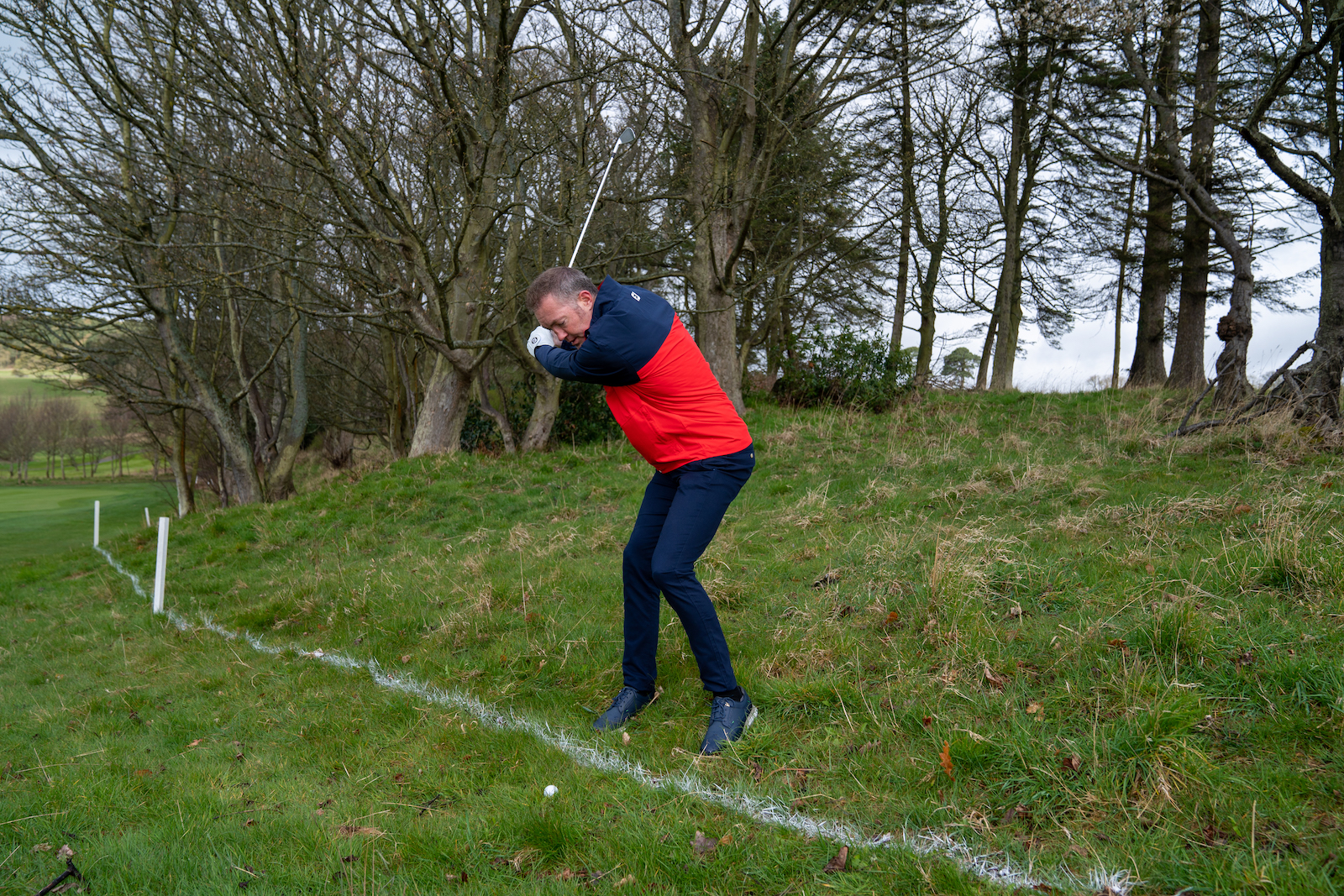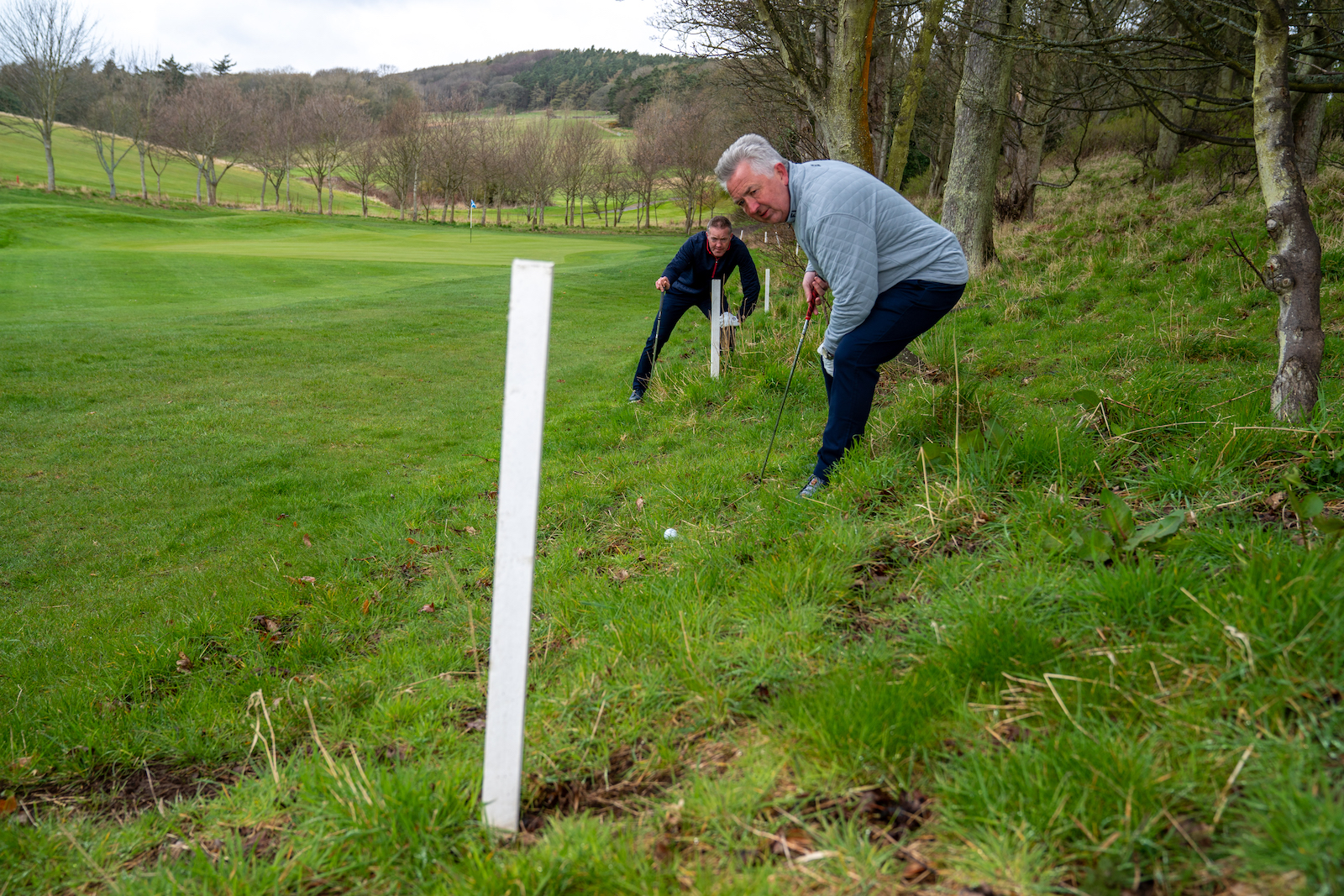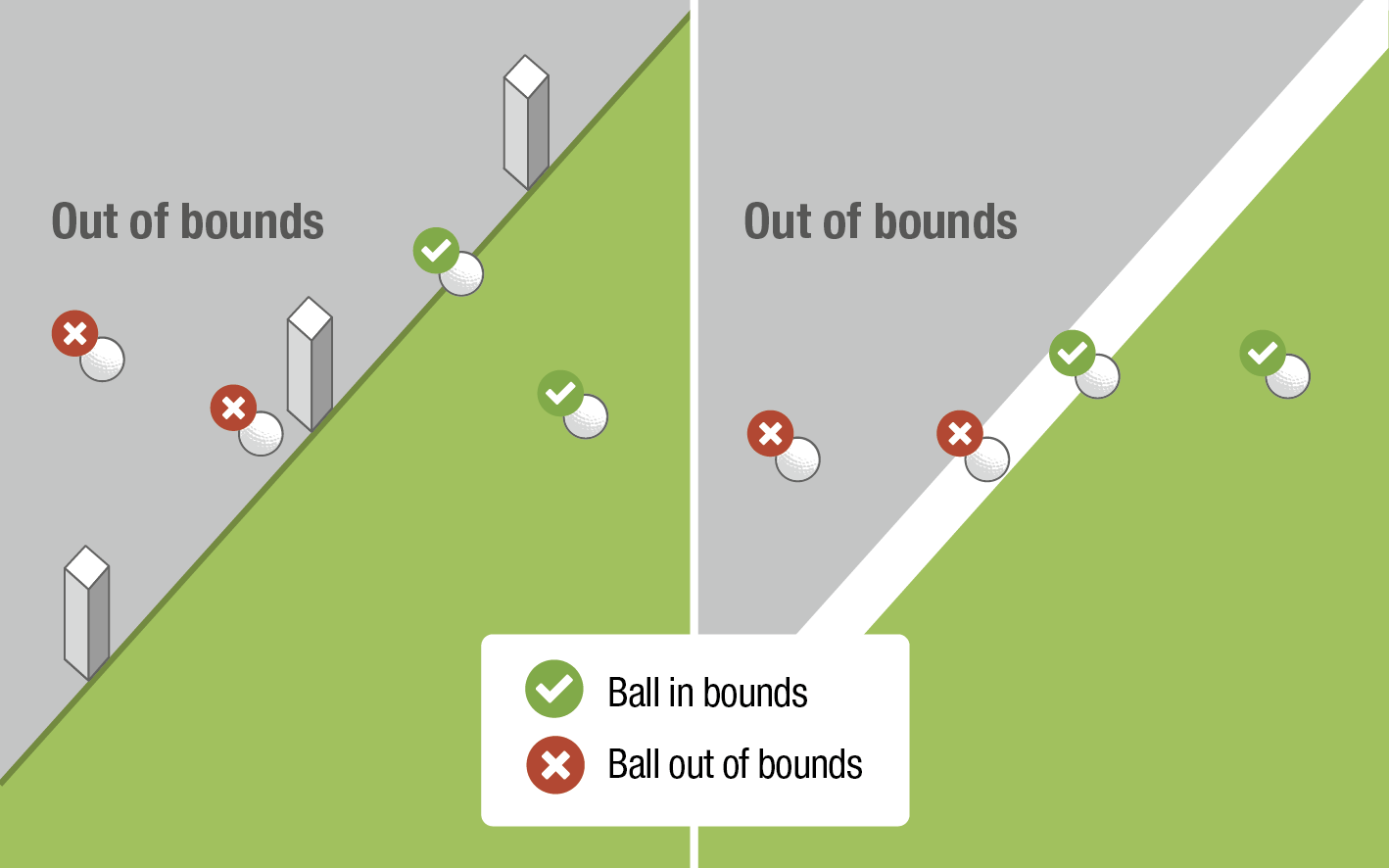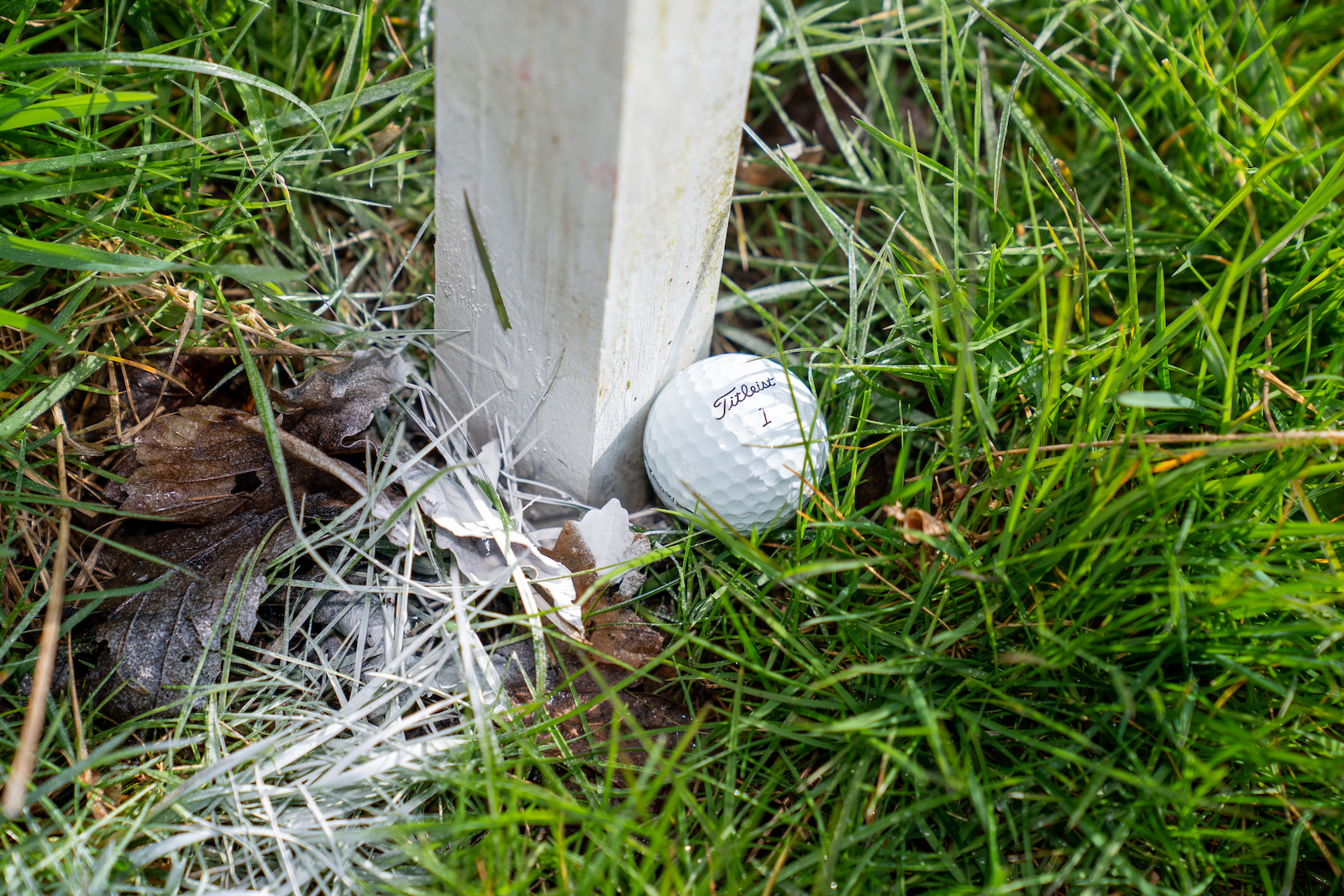Can You Stand Out Of Bounds To Play A Ball In Bounds?
We all know that out of bounds is bad news for your ball, but can you stand out of bounds to play a ball that is in bounds as in our lead photo here?


Although the answer to this specific question is very short, it’s worth just spending a little time here on certain related elements that may come in handy, too, such as knowing how to determine whether or not your ball is actually in or out of bounds when it’s a close call
First, though, that short answer to the question being specifically asked here… it’s a ‘yes’. The only thing that is relevant to the out of bounds rule (Rule 18) is your golf ball and where it is lying. You, as the player, are allowed to stand anywhere to play a ball that is within the boundaries of the golf course, even beyond out of bounds if it’s practically possible (e.g., merely a line on the ground rather than a fence or wall).

If the ball is in bounds, as here, then this is absolutely fine under the Rules of Golf
What do I do if my ball is out of bounds?
As for your ball, if it comes to rest beyond the boundaries of the course, even if only by a millimetre, you are not allowed to play it, whether or not your ball is sitting in an eminently hittable position. Instead, you must proceed under stroke and distance (Rule 18.2b) by adding one penalty stroke and playing the original ball or another ball from where the previous stroke was made.
Hopefully, if there was any doubt as to whether or not your ball would be in bounds, you will have played a provisional ball to save you time and a potentially long walk back if you have fallen just the wrong side.
What if it’s a close call?
The difference between being OOB or not can sometimes be a mere hair’s breadth, so where is the cut-off point? Well, OOB can be defined in a number of ways, most commonly by stakes or lines on the ground (usually white), but sometimes by fences, walls, railings, ditches or similar, so it’s important to know the point at which the course ends.

Sometimes it will be a close call as to whether or not your ball is in bounds
Where a boundary is defined by white stakes or a fence, the OOB line is the nearest inside points at ground level of the stakes or fence posts. Your ball is in bounds even if only a small part of it overlaps the course side of the boundary line. When OOB is marked by a white line on the ground, the line itself is OOB, but if any part of the ball lies on the course side of the line, it is still in bounds.

This diagram from the Rules of Golf clarifies when a ball is in or out of bounds
Can you move out of bounds stakes?
Finally, and sometimes of relevance to our headline question here, anything used to define OOB is deemed to be fixed under the Rules and you are not allowed to move it to make it easier to play your next shot whether you are standing in or out of bounds - even a white stake that would be easily movable. In that regard, white stakes are very different to most yellow or red penalty area stakes, which are classed as movable obstructions.
Subscribe to the Golf Monthly newsletter to stay up to date with all the latest tour news, equipment news, reviews, head-to-heads and buyer’s guides from our team of experienced experts.

You cannot move white out of bounds stakes to make it easier to play a shot
So, while you may stand OOB to play a ball in bounds, if a boundary object interferes, there is no free relief and you’ll either have to improvise, play away from your target or take an unplayable ball penalty drop. However, if you remove a boundary object, but then realise your error, you will not be penalised if you put it back to its original position before you play your shot.

Jeremy Ellwood has worked in the golf industry since 1993 and for Golf Monthly since 2002 when he started out as equipment editor. He is now a freelance journalist writing mainly for Golf Monthly. He is an expert on the Rules of Golf having qualified through an R&A course to become a golf referee. He is a senior panelist for Golf Monthly's Top 100 UK & Ireland Course Rankings and has played all of the Top 100 plus 91 of the Next 100, making him well-qualified when it comes to assessing and comparing our premier golf courses. He has now played 1,000 golf courses worldwide in 35 countries, from the humblest of nine-holers in the Scottish Highlands to the very grandest of international golf resorts. He reached the 1,000 mark on his 60th birthday in October 2023 on Vale do Lobo's Ocean course. Put him on a links course anywhere and he will be blissfully content.
Jezz can be contacted via Twitter - @JezzEllwoodGolf
Jeremy is currently playing...
Driver: Ping G425 LST 10.5˚ (draw setting), Mitsubishi Tensei AV Orange 55 S shaft
3 wood: Srixon ZX, EvenFlow Riptide 6.0 S 50g shaft
Hybrid: Ping G425 17˚, Mitsubishi Tensei CK Pro Orange 80 S shaft
Irons 3- to 8-iron: Ping i525, True Temper Dynamic Gold 105 R300 shafts
Irons 9-iron and PW: Honma TWorld TW747Vx, Nippon NS Pro regular shaft
Wedges: Ping Glide 4.0 50˚ and 54˚, 12˚ bounce, True Temper Dynamic Gold 105 R300 shafts
Putter: Kramski HPP 325
Ball: Any premium ball I can find in a charity shop or similar (or out on the course!)